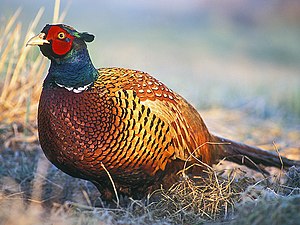Events celebrate the contributions of hunters and anglers to conservation
PRATT — The 40th Annual National Hunting and Fishing Day (NHFD) — designated by Congressional decree and Presidential Proclamation — will be held Sept. 24. The event is a nationwide celebration of hunters and anglers and their contributions to conservation.
This year, T. Boone Pickens is the honorary chair for National Hunting and Fishing Day. Pickens is one of America’s most prominent and influential businessmen. He is president and CEO of the investment firm BP Capital Management and founder of Mesa Petroleum.
The Kansas Department of Wildlife, Parks and Tourism (KDWPT) Operations Office will host a NHFD event at its Pratt Operations Office located at 512 SE 25th Ave. (2 miles east and 1 mile south of Pratt) on Saturday, Sept. 24. The celebration will run from 8 a.m. through 1 p.m. The event will include a kids' fishing derby, a casting contest, catch and release fishing, archery, a canoe race, and other outdoor events.
National Hunting and Fishing Day was established in 1972 under President Nixon, when Congress dedicated the fourth Saturday of each September to recognize the efforts of generations of hunters and anglers who support wildlife conservation and habitat improvements with billons of dollars collected through fees on
hunting and fishing licenses and permits, excise taxes on hunting and fishing equipment, as well as donations. Many species such as white-tailed deer, turkey, pronghorn, elk, whooping cranes, and bald eagles were brought back from near extinction through management programs funded by sportsmen.
Celebrities traditionally lend their names to the National Hunting and Fishing Day cause by serving as honorary chairs. Previous honorary chairs include Jeff Foxworthy, Hank Williams Jr., Tom Seaver, Arnold Palmer, Terry Bradshaw, Karl Malone, George Brett, Robert Urich, Ward Burton, Louise Mandrell, Travis Tritt, Wade Boggs, Tracy Byrd, and Luke Bryan.
National Hunting and Fishing Day 2011 sponsors include Wonders of Wildlife, the National Shooting Sports Foundation, the Sportsman Channel, Realtree, Smith & Wesson, Bass Pro Shops Outdoor World, Cabela's, GunBroker.com, Academy Sports + Outdoors, the Pope and Young Club, Yamaha Motor Corporation, and the Izaak Walton League.
For more information, including a detailed history of National Hunting and Fishing Day, as well as a feature article on Pickens, go online to
www.nhfday.org. For events in your area, contact the nearest KDWPT office.
 Image by Edith OSB via Flickr
Image by Edith OSB via Flickr





























